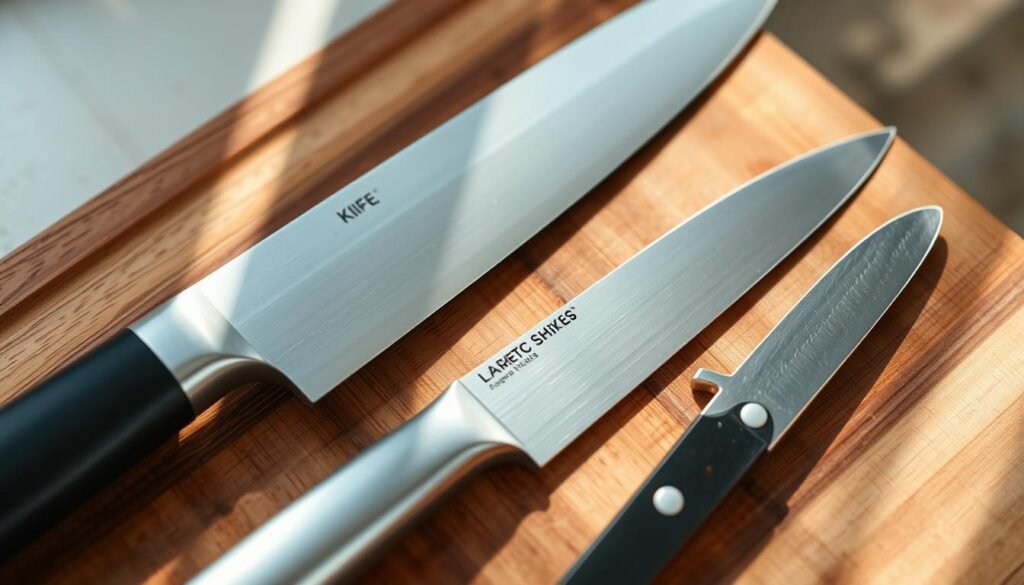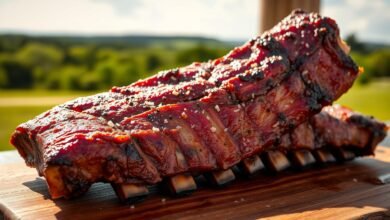
Effective cooking is built on having good knife skills, but have you ever had the impression that chopping vegetables takes longer than actually cooking the food? You’re not by yourself. Ineffective cutting techniques are the main deterrent for people to avoid making nutrient-dense, fresh meals at home, according to culinary experts. The good news is that anyone can learn the strategies used by professionals on a daily basis; advanced training is not necessary.
The secret lies in understanding how proper blade handling transforms kitchen struggles into smooth workflows. Dull tools and awkward grips don’t just slow you down—they turn meal prep into a chore. Sharp equipment paired with intentional motions creates cleaner cuts, reduces prep time, and actually makes cooking safer.
This guide focuses on practical methods perfected in professional kitchens, adapted for home use. You’ll learn why chefs prioritize efficiency over complexity and how simple adjustments to your approach yield restaurant-quality results. Forget perfectionism; we’re tackling the skills that matter most for weeknight dinners and weekend feasts alike.
Ready to slice through frustration? Let’s turn that cutting board into your new favorite kitchen tool.
Getting Started with Knife Skills
Transforming your meal prep from tedious to effortless starts with mastering a few core techniques. Former Vegetarian Times editor Mary Margaret Chappell notes that comfort in the kitchen directly impacts how quickly—and enjoyably—meals come together. Like riding a bike, these methods become second nature once you learn the right way.
Begin by treating foundational cutting methods as your kitchen toolkit. Focus on control and precision rather than speed—rushing leads to uneven pieces and slips. First things first: practice basic dicing with forgiving ingredients like cucumbers or mushrooms before tackling harder veggies.
| Common Mistake | Result | Smart Fix |
|---|---|---|
| Cutting too quickly | Uneven sizes, safety risks | Use steady, rhythmic motions |
| Skipping foundational practice | Frustration with complex recipes | Master dicing before julienning |
| Poor workspace setup | Accidents & fatigue | Secure cutting board, clear area |
Your workspace matters as much as your movements. Ensure bright lighting, a stable surface, and easy access to bowls for scraps. Remember: even top chefs started with simple chops. Build muscle memory through daily practice, and you’ll soon handle ingredients like seasonal produce with ease.
Understanding Your Kitchen Knives
Does your drawer hold more blades than you actually use? Professional kitchens prove three well-chosen tools outperform a dozen mediocre ones. Let’s simplify your arsenal by matching each blade to its ideal tasks.

Chef’s Knife vs. Utility Knife
Your chef’s knife acts as the kitchen workhorse. Its broad, curved blade rocks through herbs and root vegetables effortlessly. An 8-inch version suits most home cooks, while 10-inch models give extra leverage for melons or squash.
The utility blade shines in precision tasks. Its 4-inch length offers control for peeling garlic or slicing strawberries. Unlike bulkier options, it maneuvers around small ingredients without bruising delicate flesh.
| Feature | Chef’s Knife | Utility Knife |
|---|---|---|
| Blade Length | 8-10 inches | 3-4 inches |
| Best For | Chopping, dicing, slicing | Peeling, trimming, detail work |
| Handle Design | Ergonomic grip for power | Slim profile for agility |
| Common Uses | Carrots, onions, meats | Garlic, berries, soft fruits |
The Role of Serrated and Specialized Knives
Serrated edges transform tricky slicing jobs. Their saw-like teeth grip crusty bread or tomato skins without crushing soft interiors. A 10-inch model handles pineapples and squash rinds better than standard blades.
Handle comfort matters most during long prep sessions. Weight-balanced designs reduce wrist strain, while full-tang construction (where the metal extends into the handle) ensures durability. Test grips before buying—your perfect match should feel like an extension of your hand.
Proper Knife Handling and Grip Techniques
Ever notice how chefs glide through ingredients while home cooks often wrestle with theirs? The secret lies in how you hold your tools. Proper technique transforms awkward motions into fluid movements, turning meal prep from a chore into an art form.
Hand Position and the Claw Method
Start by mastering the chef’s pinch grip. Place your thumb and index finger on opposite sides of the blade’s base, just above the handle. This creates precise control, letting the blade’s weight do the work. Your remaining fingers wrap naturally around the handle for stability.
Your guiding hand becomes a safety shield with the claw method. Curl fingertips inward, pressing knuckles against ingredients. This position keeps food steady while protecting your fingers from accidental slips. Practice with soft items like tomatoes before tackling harder veggies.
Finding Your Perfect Grip
Adjust your stance for maximum efficiency. Stand with feet shoulder-width apart, blade at elbow height. This alignment lets your shoulders and core power each cut—not just your wrists. A damp towel under your cutting board prevents dangerous sliding during fast-paced tasks.
Develop a rhythmic rocking motion. Keep the tip anchored to the board as you pivot the blade up and down. This technique creates uniform slices while reducing strain. Remember: relaxed hands mean cleaner cuts and less fatigue.
| Common Grip Errors | Better Approach |
|---|---|
| White-knuckling the handle | Light pinch grip near blade |
| Flat-fingered guiding hand | Curled claw position |
| Cutting at chest height | Elbow-level workspace |
Essential Knife Skills for Home Cooks
What separates tedious kitchen sessions from joyful cooking experiences? The answer lies in smart preparation methods that value practicality over perfection. While professional kitchens demand exact measurements, your home meals thrive on consistent sizing that ensures even cooking.
Focus on cutting ingredients into roughly equal pieces rather than identical shapes. This approach works wonders for soups, stir-fries, and casseroles where textures blend during cooking. Save intricate julienne cuts for special occasions—your weeknight chicken curry won’t care if the carrots aren’t Michelin-star perfect.
Prioritize mastering three fundamental moves: the rough chop for hearty dishes, the quick dice for sautés, and the efficient slice for proteins. These cover 90% of recipe requirements while slashing prep time. A recent culinary study found home cooks using these methods reduced vegetable preparation by 40% compared to precision-focused techniques.
Embrace the power of adaptable methods. The same basic chops work whether you’re making Mexican fajitas or Japanese curry. As your confidence grows, you’ll tackle complex recipes with ease, knowing your foundation supports culinary creativity. Remember: every minute saved on chopping means more time savoring flavors with loved ones.
Knife Skills: Cutting, Slicing, and Dicing Techniques
Want your meals to cook evenly every time? Master these two essential methods to transform ingredients from awkward shapes to perfect portions. Consistent sizing isn’t just about looks—it ensures heat distributes properly across your pan or baking sheet.
Slicing with a Rocking Motion
Anchor your blade’s tip to the board while pivoting the handle. This rocking technique lets you slice herbs or onions in one fluid motion. For soft items like tomatoes, use a serrated edge to saw through skins without crushing flesh. Keep your guiding hand in a claw position—knuckles guide the blade while fingertips stay clear.
Dicing and Mincing for Even Cooking
Start round vegetables by creating flat surfaces. Cut onions in half from stem to root before making parallel slices. For potatoes, trim edges to form stable rectangles, then slice into uniform cubes. Pro tip: Leave garlic cloves whole until your final chop—this prevents sticky fingers and uneven pieces.
With practice, these moves become second nature. You’ll spend less time prepping and more time enjoying dishes where every bite cooks perfectly. That’s how home cooking becomes both efficient and satisfying.



